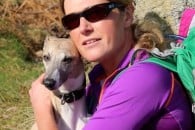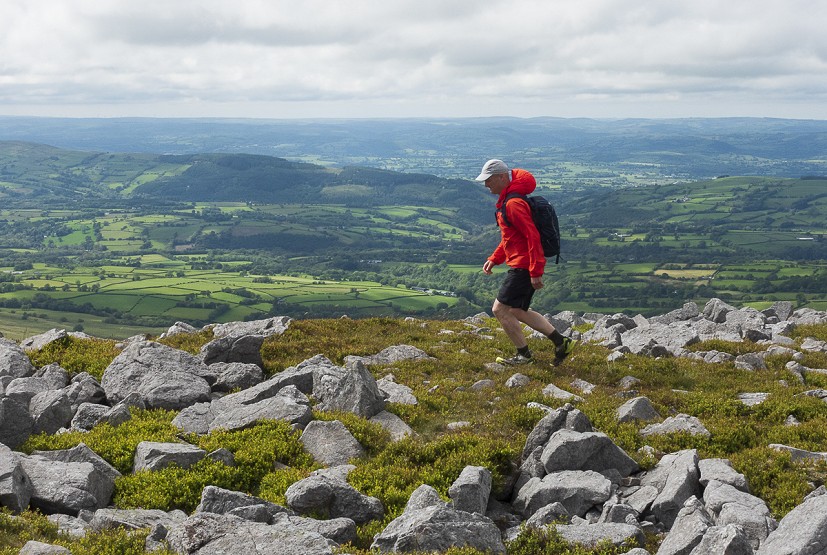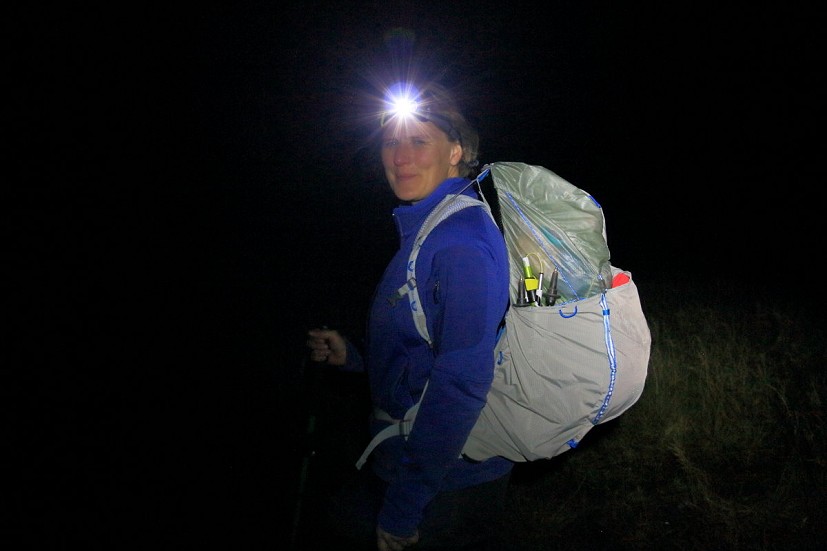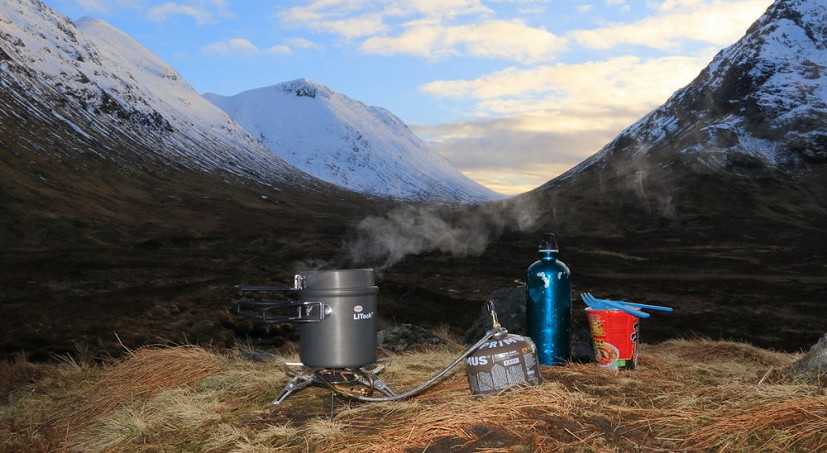Lightweight Walking - Tips for Beginners
Are you looking to shed weight, but unsure where to start? Fiona Russell asks some keen walkers about their simple strategies for going light on the hills.
I'm not a big fan of heavy packs. I don't weigh a lot myself and the addition of extra weight on my back makes me feel sluggish and slow, especially on the ascents. A heavy rucksack can be painful for shoulder and back muscles, too, and I have found that even the most padded packs dig into my skin and rub when they are full of kit.
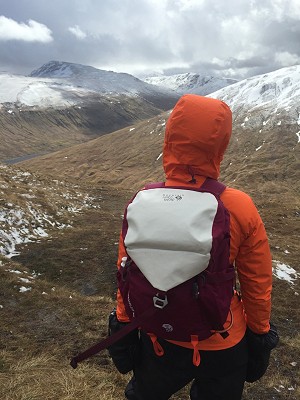
Going lighter should also, in theory, allow you to walk further with greater ease. A lighter pack requires you to use less energy and it will reduce the impact on joints and muscles.
But there is a balance to be had. If you skimp on the essentials, such as carrying all-weather clothing, or crampons and an ice axe in winter, you could easily compromise safety. Leaving out items such as spare layers, food and water can lead to discomfort at best and personal danger at worst.
Yet I bet you are like me and frequently eye other people's tiny packs, wondering how they can be carrying seemingly so little. More recently, I have witnessed a rise in fast hiking, where walkers appear to be carrying the smallest of packs and the lightest of kit. I always imagine they must have sacrificed safety for speed, but when I question them they appear to have packed all the right items.
So I asked some experienced walkers what they pack and how they have achieved a lightweight rucksack.
It's a balancing act
It's worth pointing out that lightweight kit tends to be more expensive, which might seem strange. You may presume that because products are made from less or from thinner fabrics it should therefore cost less. But this is not always the case. Manufacturers argue that the cost of designing lighter weight fabrics and making pared down kit is pricier than an average product.
One tip is to start by purchasing a few good quality lightweight items as and when you can afford them, building up your complete kit list over years. For example, you could start with your cooking equipment, such as a titanium food bowl and a "spork", or buy titanium tent pegs instead of the standard aluminium. Make weight one of your main criteria next time you buy a day pack, waterproofs or footwear.
You might find second-hand lightweight kit for sale on the UKH forums.
Compare and contrast different items, too. For example a foam roll sleeping mat is far cheaper than a self-inflating mat – and often much lighter. Although it's bulkier and less comfortable, too.
Hazel Strachan, the female record holder for the number of Munro rounds, makes a valid point: "There is a lot of great lightweight kit out there but sometimes I find ultra lightweight can be too skimpy. You should choose your kit to reflect the level of comfort you want."
Other walkers report that lightweight kit is less durable. The calculation of weight, price, functionality, durability and the likely conditions is a call you'll have to make yourself.
Check the weather
The weather can make a huge difference to what you need to pack. Fair weather days allow walkers to carry fewer and/or lighter clothes, for instance if the forecast is for dry conditions you might pack a lightweight waterproof jacket but not the trousers, while if it's warm you might get away with a lighter insulation layer.
Some walkers will take windproof outer layers, rather than a spare baselayer and waterproof jacket, if they are sure the rain will stay away. The best advice is to make use of a couple of forecast services, such as MWIS and the Met office, and if you're really set on going as light as possible then plan a walk in drier or milder weather.
If you are planning a winter walk it's important to be aware of the potential for snow and ice. A day of rain is one thing and requires essential waterproof items, but if you will be walking on snow or ice, you'll need safety kit such as crampons and an ice axe. The cold, dark and often stormy conditions of winter can be seriously life-threatening, making your choice of clothing and equipment more highly consequential.
Seasonal essentials include warm and windproof clothing, at least a couple of pairs of gloves, winter boots, ski goggles, at least one (preferably two) decent headtorch, extra high calorie food and a group shelter or bivvy bag. In terms of weight, that all adds up. Beginners should not allow the urge to go lightweight to lead them into making poor equipment choices. A heavier bag is a small price to pay for winter safety.
However, all that said there are definitely still occasions when it makes sense to resist packing for every remotely possible scenario. I like the tip from Alex Roddie in his article about Lightweight Backpacking for Beginners: "Don't pack your fears."
He writes: "Just-in-case items tend to mitigate against a perceived risk, so get into the habit of conducting informal risk assessments during the planning stage of each outing. Get as much information as possible, then consider the potential impact of the risk and how likely it is to affect you."
…Or head for warmer climes
Some people will take the weather tip to a higher level and travel overseas to countries with sunnier conditions.
Caroline Menhennet's tip is to "choose your destination carefully". She adds: "A colder country needs lots of kit, while a hot country requires lots of water so I look for destinations with sunshine and water that is safe to drink. This could be Scotland in the summer, or the Alps a little earlier or later in the year."
There are plenty of winter warmer destinations, too, such as Mallorca, The Canaries and Morocco. However in these days of environmental consciousness, overseas flights should at the least be a considered (and infrequent) decision. Look at carbon offsetting too.
Mapped out
A map and compass are important walking items, even if you also use an app on your phone to navigate. However, there are plenty of hacks for lightweight alternatives.
James Gray recommends: "Bin the full-size paper map and replace with a print-out of the section you need and then cover it in Tyvek lightweight plastic wrap."
Other walkers use map print outs, OS Maps or Memory Maps allow this, and insert them into a waterproof map case. Harvey Maps also sell customised waterproof excerpts of maps that are far lighter than a full map.
Start lighter
The weight of a rucksack is an important factor for many walkers. It's the starting point of your packing and it is disheartening if the pack itself feels heavy.
James Gray recommends "removing unnecessary support from rucksacks to make them lighter to start with".
Other tips for reducing the weight of a rucksack include to removing the lid and abandoning the rain cover, if it's not going to be wet.
Look for simpler styles of rucksack. The fewer (perhaps unnecessary) features, the lighter the pack is likely to be. A waterproof rucksack saves the need for dry bags or a rain cover, though these are rare and likely to be heavier than non-waterproof alternatives.
Other walkers choose a smaller rucksack, which will usually be lighter and also prevents you from over-packing.
Stacey Holloway looks to her trail running friends for inspiration. She says: "Items that are made for runners, such as rucksacks, are often much lighter than walking products."
Compressing items, such as a synthetic insulated jacket, sleeping bag, spare layers, hat and gloves in dry bags, helps you to pack smaller (if not lighter) because you will remove as much air as you can before adding to the rucksack. You'll be surprised by how much smaller your pack is if you compress items.
Water savers
It's essential that walkers have enough water for adequate hydration but many are choosing to switch from carrying all the water they need to taking some water and a portable water filter system.
Brian Williams says: "If I have a water filter I only take half the water I used to carry. This is a big weight saver."
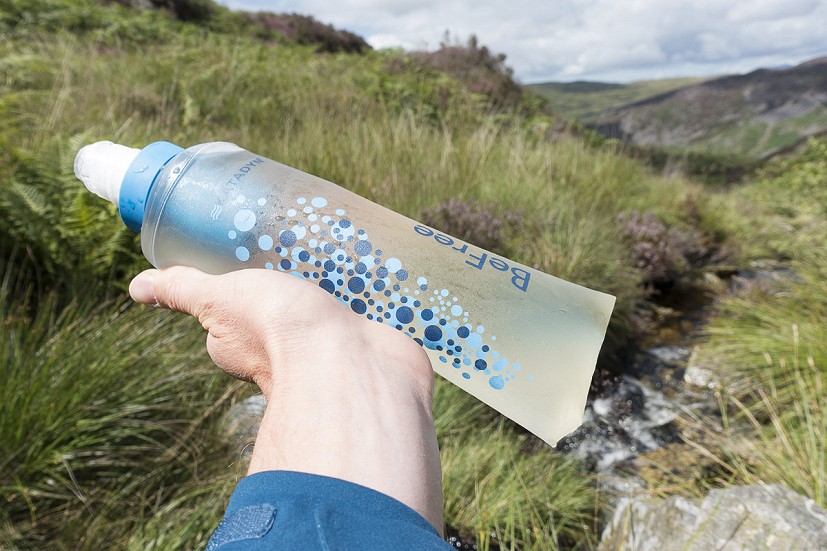
Steph Droop adds: "For a one-night overnight walk I only carry one to two litres of water and drink from streams for the rest of my hydration."
David Mair takes a lightweight water filter and a collapsible water bottle. Although, he adds: "You do need to plan ahead a little and know where the water might be along your route, especially in the summer when you are high on the hill."
Gary Vallance has a lighter solution to water bottles, too. He says: "Reuse plastic bottles instead of metal Sigg style. I've found 750ml and 1.5l 'squash' bottles to be extremely robust. A loop of cord round their neck is a useful addition."
Camp clever
A multi-day walk with camping overnights will obviously require more equipment than a day hike. Additional kit to consider includes a tent or bivvy bag, sleeping bag, sleeping mat, stove, fuel, cooking equipment and food.
Depending on your tent, it might be that a bivvy bag will save you vital grams. Hazel Strachan is a keen wild camper, and uses a bivvy bag instead of a tent "because it's much lighter".
Other people adapt tents to reduce weight. Lisa Martin says: "I managed to reduce the eight of my 800g tent by using trekking poles instead of tent poles."
Lisa also uses a single skin tent where conditions allow.
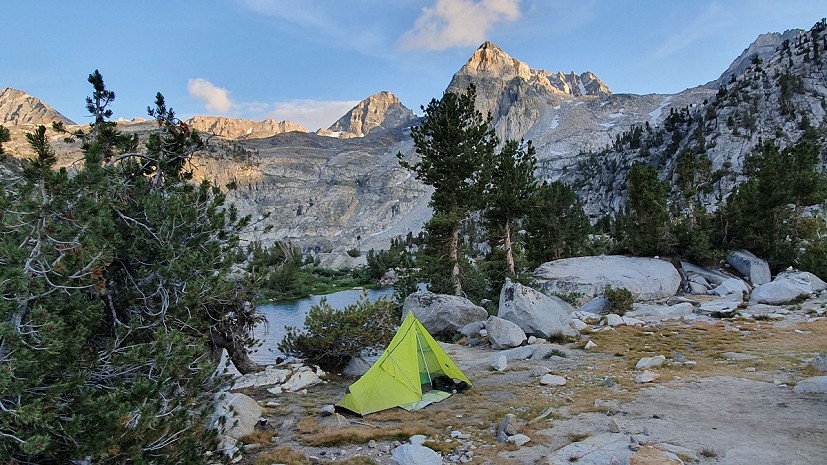
Taking lightweight even further, Gary Vallance, uses a 300g poncho as a tent. He explains: "Weighing things up, I replace 1200g of waterproof jacket, waterproof trousers and pack cover/liner with a 300g poncho, pitching it on walking poles to sleep under and leaving the 1800g tent at home."
Using techniques learned in the military, Helen Bolland says: "Don't bother carrying a tent because a decent ground sheet, bungee cord and a couple of pegs will give you a great basher – and you get to enjoy the night sky."
Or you could choose to take a simple tarp or a hammock.
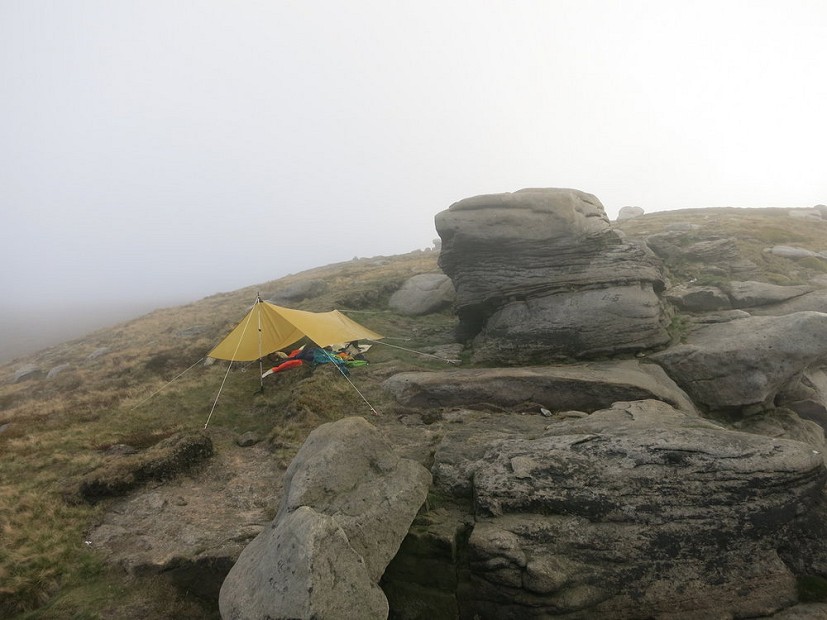
It's worth pointing out that all non-tent camping options have significant drawbacks as well as benefits, including the fact that you're less protected from rain and midges, more subject to wind and cold and, in the case of a hammock, entirely dependent on finding suitable trees (not usually an easy task up high in Britain's over-grazed hills).
Gary Vallance offers a good tip that if you walk with friends rather than going solo, you can split your gear, such as a tent and cooking equipment, between you. Splitting the items that many walkers share cuts the overall weight per person.
He adds: "Another way to take less but remain warm is to strike camp before the first light when the temperature is still falling, and walk before breakfast."
A tip for sleeping bags is to wear clothes to sleep in. You can pack a lighter weight sleeping bag, whether down or synthetic insulation, if you wear an insulated jacket and running tights at night.
Remember to pack a spare pair of dry socks for improved overnight comfort, too. Add two supermarket shopping bags to be worn over dry socks inside wet walking boots or running shoes to keep feet dry and warm.
Pre-book accommodation
While many walkers will be keen to take advantage of the cheaper option to camp, it you want to keep the weight of your pack down you can simply book accommodation – hostels or B&Bs – ahead. This means you do not need a tent, mat sleeping bag, dinner or cooking equipment at all. You might also get by with fewer warm clothes.
Eat lighter
Dehydrated and freeze dried food is a clear winner for most walkers because it weighs a lot less than foods that are already hydrated. You could buy more expensive camp food from outdoor stores, or make your own. For example, couscous is easily and cheaply bought in supermarkets and very lightweight.
Many walkers suggest taking food basics that can be mixed with hot water, such as instant coffee and soup sachets.
Gary Vallance has another tip. He says: "Take ziplock bags of premixed dry food options and additives. These might include coffee or cocoa premixed with milk powder/sugar; porridge oats with milk powder; standard herb/spice mixes (eg chilli, bolognese, curry) to season basic foods bought en-route."
A popular solution for cooking is a tower stove system. Gerena Sumen says: "[This] means I do not need to take pots and pans."
Another tip is to take a lightweight stove windshield, which helps to reduce the amount of gas used while cooking and, therefore, the amount of gas you need to carry. After a few nights you'll have recouped the weight of the wind shield.
Some walkers prefer not to bother with cooked food if the walk is only a few days. This may save on weight because you do not need a stove, but only up to a point if the food you're carrying is of the heavy non-dehydrated variety.
Steph Droop says: "For one-night overnighters, I don't take a stove and I eat cold. I have only done this in warmer weather, though."
What are you wearing?
The clothes that you wear can make a difference to overall weight carried. Some people advocate choosing natural wool, such as merino or yak, for your baselayer. Natural products tend not to become as whiffy with sweat, which may mean you need to take fewer of them with you on a longer hike. Some people will wear just one merino base layer or a pair of socks for many days of walking. However many other people cannot abide the feel of wool on bare skin, and others point out that wool base layers are slower drying than their synthetic equivalents. This is a choice only you can make!
In summer, lightweight waterproofs will be sufficient in many situations. Again Stacey Holloway takes tips from her running friends and packs "trail running waterproofs because they are usually much lighter than walker equivalents".
Look for simpler designs of clothing. For example, a mid-layer than is pullover style rather than with a front zip may be lighter. Pared down styles of waterproofs without extra pockets are usually lighter on the scales than jackets with lots of features.
Greg Morrison has a strict rule for multi-day walks: "One set of clothes for daytime and one set for night-time."
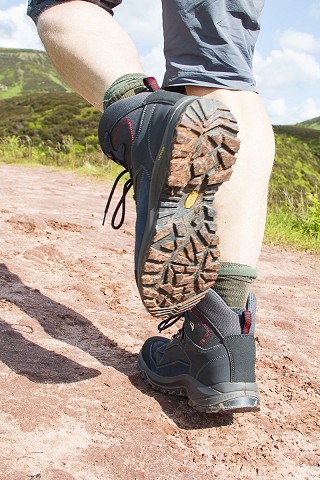
Lisa Martin is more extreme. During a multi-day mountain walking trip she was strict with her packing: "No changes of clothes, except one change of undies and socks."
Summer walking boots are lighter than winter boots, and even within these two categories there are lighter and heavier products. Go to a shop and weigh them up for yourself, or scour the reviews for details of weight.
For Phil Dye, summer conditions see him changing to lightweight walking boots rather than heavier boots more suitable for winter conditions. He says: "I am always surprised to see walkers still wearing winter boots while walking in the mountains in summer."
Many other walkers swap to an even lighter option of trail running shoes.
Lose weight yourself
This might take a little longer than shedding kit weight, however it does make sense and it's cheaper than buying lightweight equipment.
Brian Williams says: "I spent a lot of money on some high quality, very lightweight gear and then I lost a stone in weight myself. It proved to be the cheapest possible way to lug less weight up a mountain."
The smaller items
It depends on how long you will be walking for as to whether you plan to pack items such as toiletries. Another tip from James Gray is to "squeeze most of the toothpaste from a tube and take that with you".
Others, such as Emmanuelle Tulle, recommend packing the tiny toothpaste tubes that are often given out on long-haul flights or buying smaller travel items from the supermarket or chemist.
"A collapsible toothbrush is a good idea, too," adds Emmanuelle.
Meanwhile some walkers take their toothbrush weight to further extremes and cut it in half. Another suggestion comes from Sue Roberts to "tick both lightweight and eco friendly lists and take a bamboo toothbrush".
Review and assess
A useful extra tip is to keep a note of what you pack for different trips. When you return, reassess the kit you used and the items you did not.
Neil Adams says: "Each time you get back from a trip, check if you carried anything that you didn't actually need. If so, leave it at home next time."
